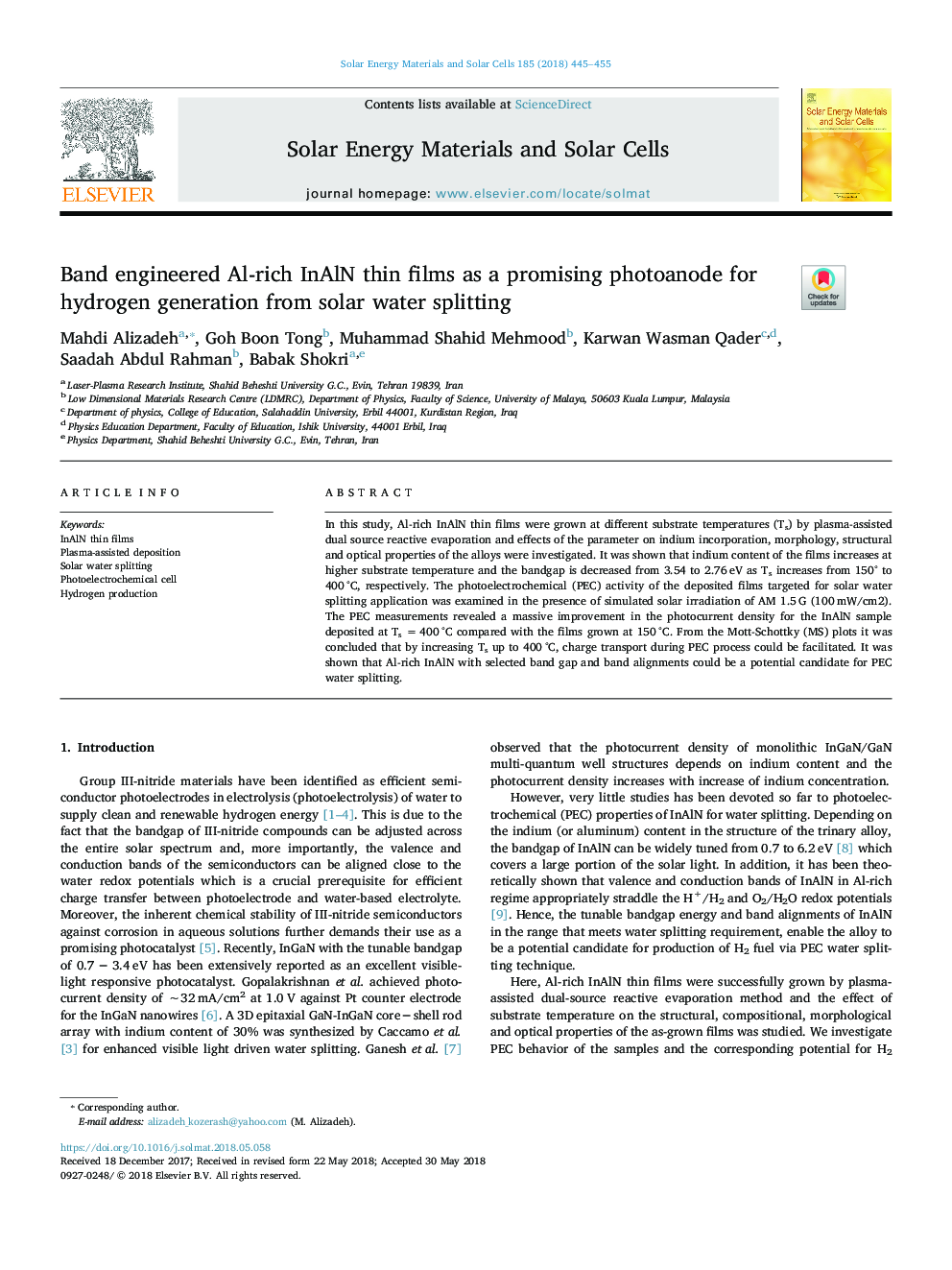| Article ID | Journal | Published Year | Pages | File Type |
|---|---|---|---|---|
| 6533972 | Solar Energy Materials and Solar Cells | 2018 | 11 Pages |
Abstract
In this study, Al-rich InAlN thin films were grown at different substrate temperatures (Ts) by plasma-assisted dual source reactive evaporation and effects of the parameter on indium incorporation, morphology, structural and optical properties of the alloys were investigated. It was shown that indium content of the films increases at higher substrate temperature and the bandgap is decreased from 3.54 to 2.76â¯eV as Ts increases from 150° to 400â¯Â°C, respectively. The photoelectrochemical (PEC) activity of the deposited films targeted for solar water splitting application was examined in the presence of simulated solar irradiation of AM 1.5â¯G (100â¯mW/cm2). The PEC measurements revealed a massive improvement in the photocurrent density for the InAlN sample deposited at Ts =â¯400â¯Â°C compared with the films grown at 150â¯Â°C. From the Mott-Schottky (MS) plots it was concluded that by increasing Ts up to 400â¯Â°C, charge transport during PEC process could be facilitated. It was shown that Al-rich InAlN with selected band gap and band alignments could be a potential candidate for PEC water splitting.
Keywords
Related Topics
Physical Sciences and Engineering
Chemical Engineering
Catalysis
Authors
Mahdi Alizadeh, Goh Boon Tong, Muhammad Shahid Mehmood, Karwan Wasman Qader, Saadah Abdul Rahman, Babak Shokri,
